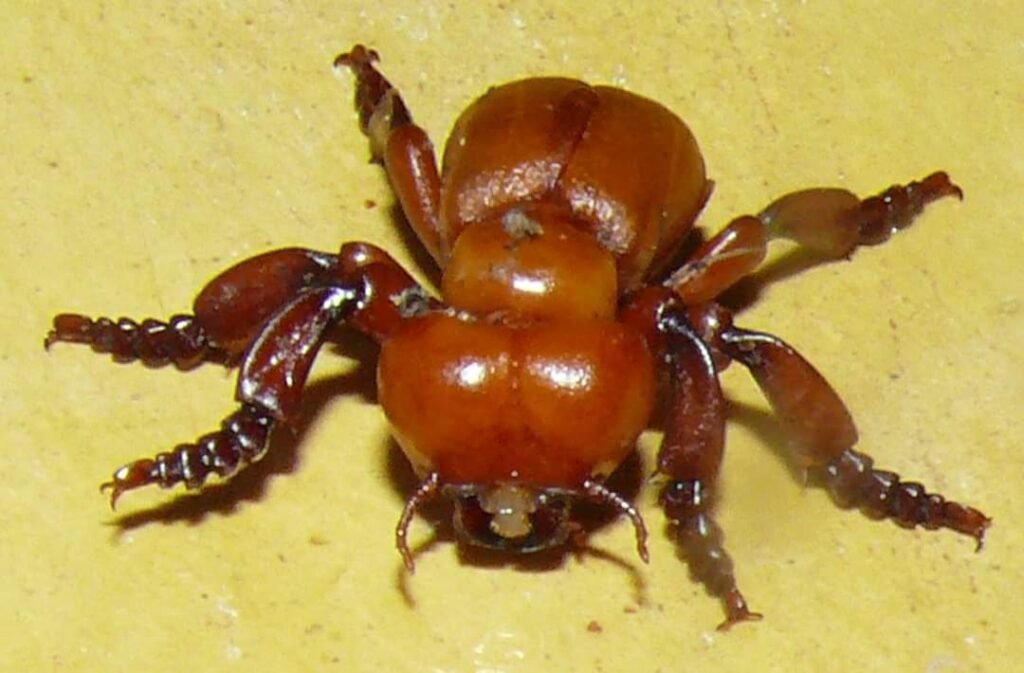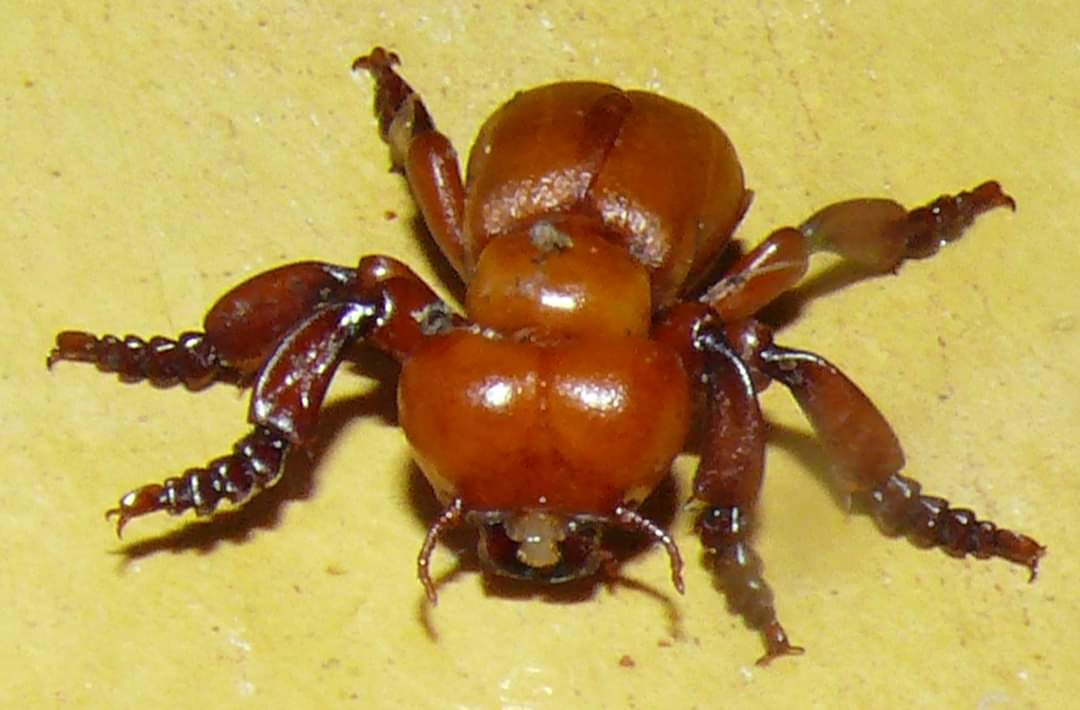
New insights on the rare blind blister beetle genus Meloetyphlus (Coleoptera: Meloidae): occurrence in Colombia, SEM larval description, and molecular
phylogenetic placement.
Andrea Di Giulio, Takumasa Kondo, Marco A. Bologna, Alessandra Riccieri
Annals of the Entomological Society of America, XX(X), 2023, 1–14
https://doi.org/10.1093/aesa/saad017
https://academic.oup.com/aesa/advance-article-pdf/doi/10.1093/aesa/saad017/50842462/saad017.pdf
ABSTRACT
Meloetyphlus Waterhouse is a monotypic genus of Meloidae ascribed to the tribe Tetraonycini, subfamily Meloinae. As for most blister beetles, its first-instar larvae (or triungulins) are parasites of bees, but M. fuscatus Waterhouse is the only species known to parasitize members of the tribe Euglossini (Hymenoptera:
Apidae: Apinae). Despite being widely distributed in Central and South America, its presence in Colombia has never been confirmed. In this article, we document the occurrence of this genus in Colombia providing the first certain record for this country. In addition, some aspects of its parasitization of Eulaema nigrita
Lepeletier are reported and illustrated with macrophotographs and a video. By the means of drawings and SEM micrographs, we provide the most detailed description of the first-instar larva of M. fuscatus to date and a comparison with the triungulin of the closely related Tetraonyx fulvus (LeConte). Finally, we investigated the phylogenetic position of Meloetyphlus using molecular data, to support its attribution to the tribe Tetraonycini
La mia domanda:
un Meloidae dalla morfologia particolare ma un Meloidae a tutti gli effetti con ciclo vitale tipico, con prima larva triungulino e parassita di imenotteri.
Quale può essere il significato adattativo dell’anoftalmia?
Gradito ogni tipo di commento che può essere aggiunto scrollando questa pagina.

Lascia un commento